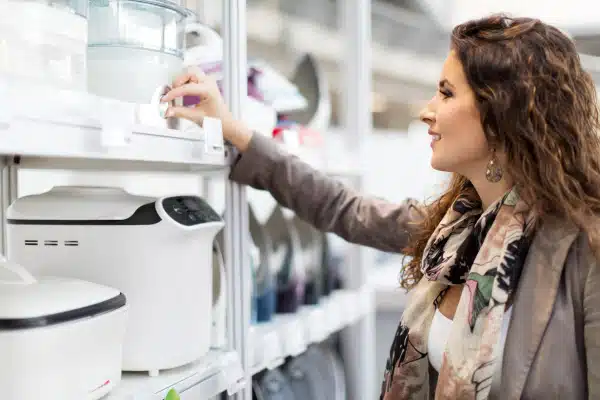Although we’re taught to never judge a book by its cover, aesthetics DO matter.
In a recent blog post, I wrote about the rise of the Stanley Quencher (if you haven’t read that one yet, check it out here).
The brand’s recent success can be partially attributed to its ability to uncover its customer’s story and tap into the experience they have while using its products.
With a fanbase primarily comprised of women — many of whom are working (and parenting) from home — Stanley recognized the increased demand for aesthetically appealing everyday items that can bring a sense of peace and calmness.
When you feel positive emotions about the design of a product, you’ll naturally be more inclined to use it. This phenomenon can be explained by the aesthetic-usability effect: people perceive more-aesthetic designs as easier to use than less-aesthetic designs.
In 1995, researchers Masaaki Kurosu and Kaori Kashimura put this principle to the test by asking 252 people to rate 26 variations of an ATM, including its design, ease of use, and aesthetic appeal.
What did they find?
The correlation between aesthetic appeal and perceived ease of use was stronger than the correlation between aesthetic appeal and actual ease of use.
In other words, when things look better, we tend to believe they’ll actually work better. I don’t know about you, but when I visit a business’s website that looks like it was last updated in 2009, I’m immediately skeptical. My mind begins to wonder: what else are they neglecting to keep up with?
Everything is experience.
The aesthetic-usability effect doesn’t just help you overcome apathy and get your prospect’s attention. A positive response to a product’s design can mitigate your customer’s frustration when minor problems occur.
When there’s a small glitch on a beautifully designed website, users are more likely to have patience with it. (If it has trendy colors and sleek designs, it must work!) On the other hand, when a dated website is experiencing a minor glitch, you’ll quickly move on. (Of course it doesn’t work, look at it!)
Moreover, an initial positive impression of a product can subconsciously shape our long-term relationship with it. We’re naturally drawn to keep using aesthetically appealing products because they evoke positive feelings. Such repeat engagement can lead to stronger emotional connections and loyalty over time.
The Caveat
As with everything in customer experience, though, you’ve got to strike a balance. A beautiful design can only get you so far. Customers will eventually leave if your product or service doesn’t work. While you should certainly invest in aesthetic appeal, don’t sacrifice usability for style.
For example, I’m currently in the process of re-designing my website (if you see any crazy-looking pages right now, that’s why!). A designer told me that ‘invisible’ navigation bars are trending right now. You know, the ones that only appear when you hover over the top of the screen? I hate those. I find them super annoying. Why would I intentionally make it harder for customers to navigate my site? Instead, I’m opting for the ~vintage~ locked navigation bar that’s always easy to find. Make it beautiful, but make it useful.
How Can You Apply The Aesthetic Usability Effect To Your Business?
- First impressions matter. Whether it’s your storefront, office, website, or product, the more ‘pleasing’ the appearance, the more polished and competent your brand will be perceived as.
- Everything is experience. Boring, outdated, or unoriginal designs can lead customers to make unfair assumptions about your company as a whole.
- When you can associate your brand with positive emotions (think friendly employees, like Trader Joe’s), your customers will be more tolerant of minor mistakes and more inclined to come back.
- Look at things through your customers’ eyes. When was the last time you went through your buyers’ journey? From IRL signs to emails and texts, are things as visually appealing as they could be?
